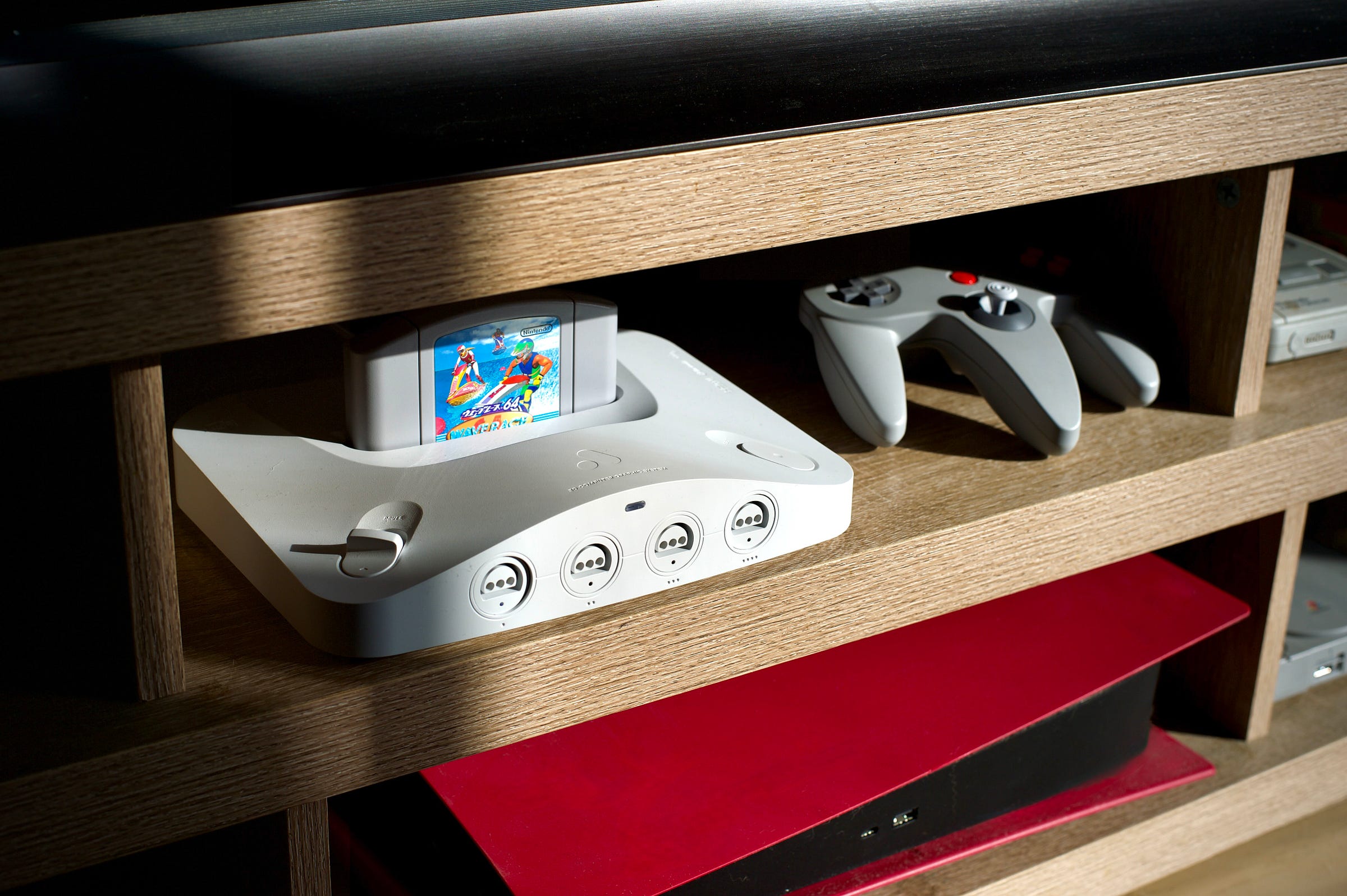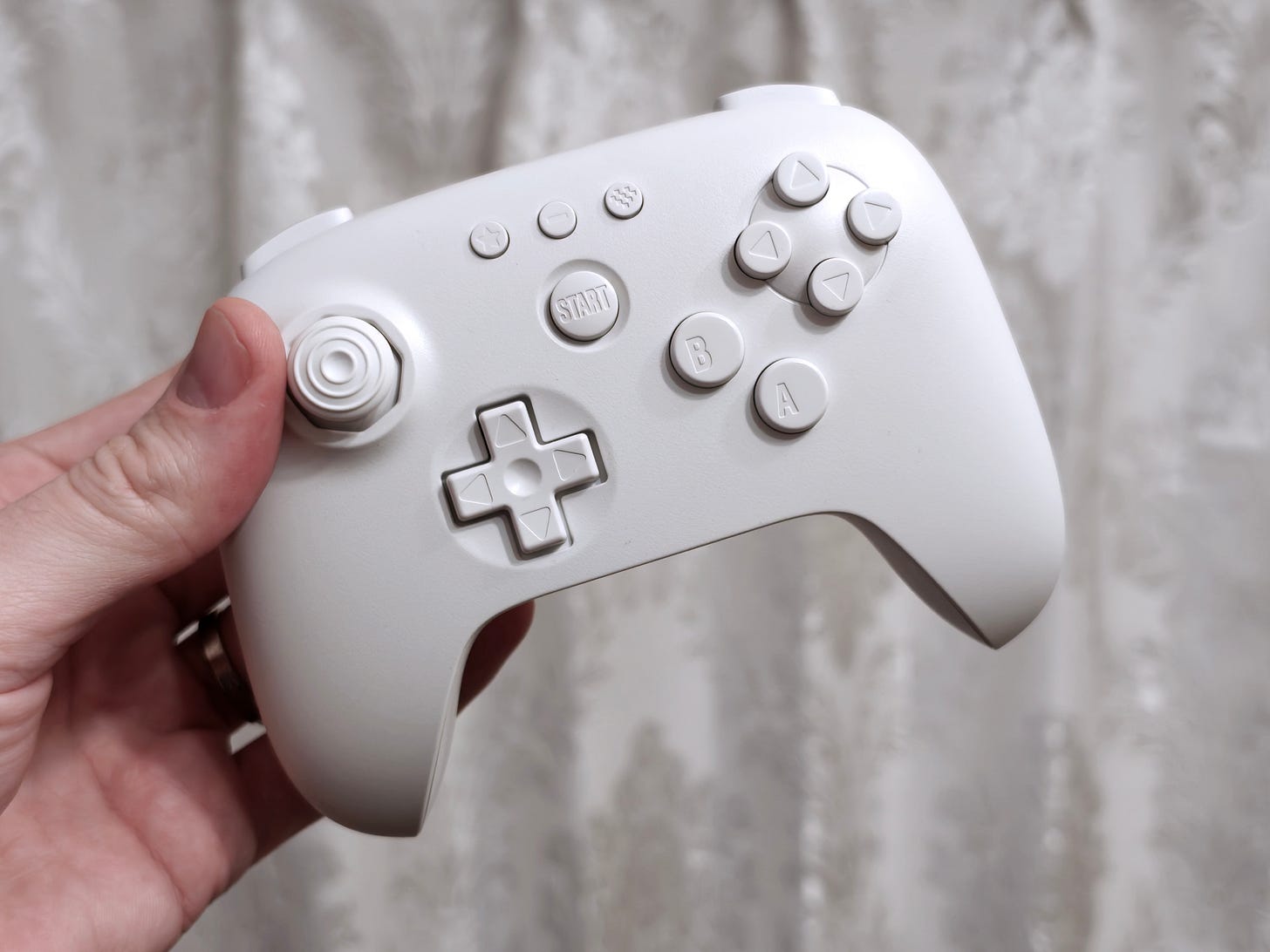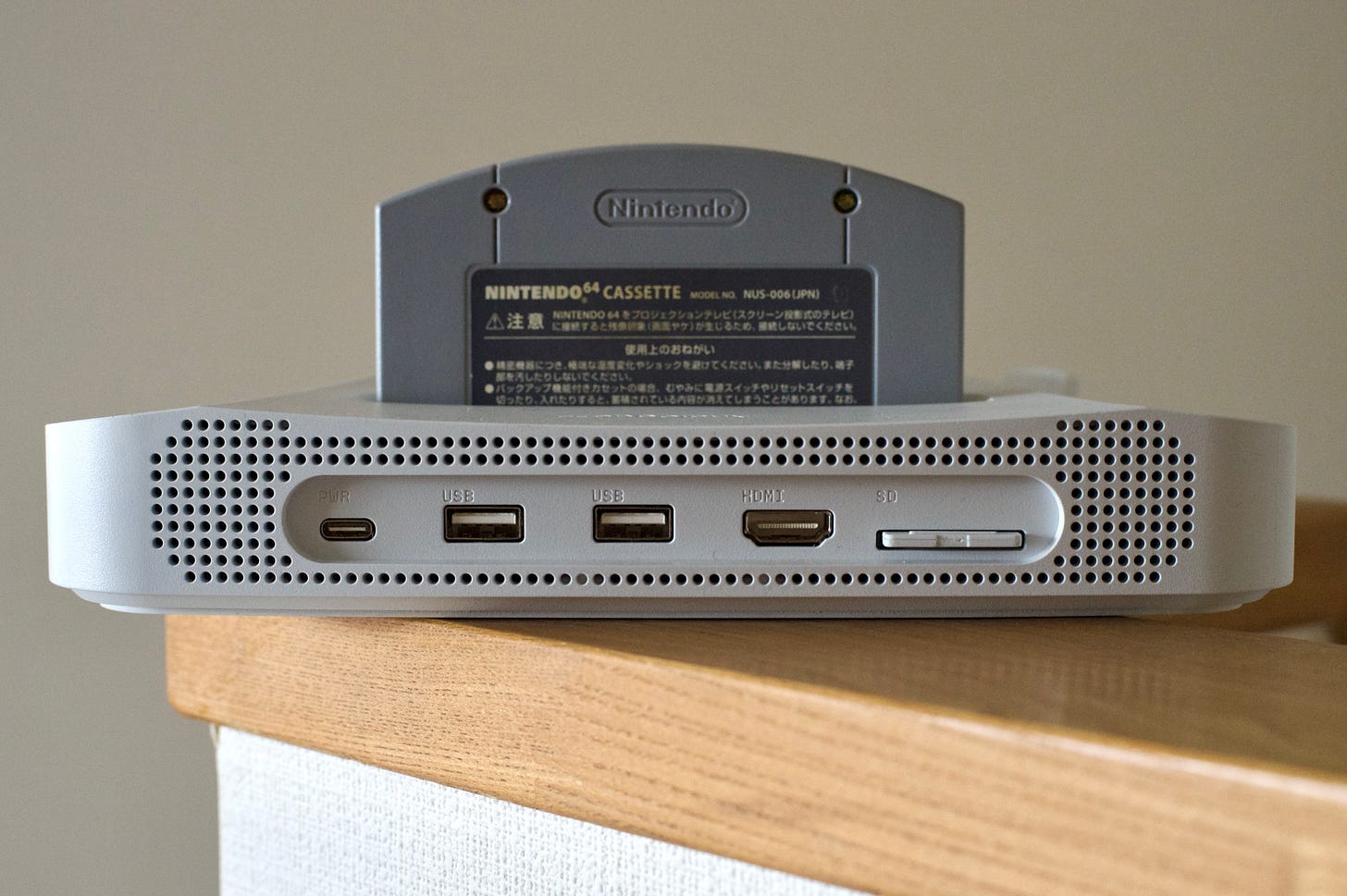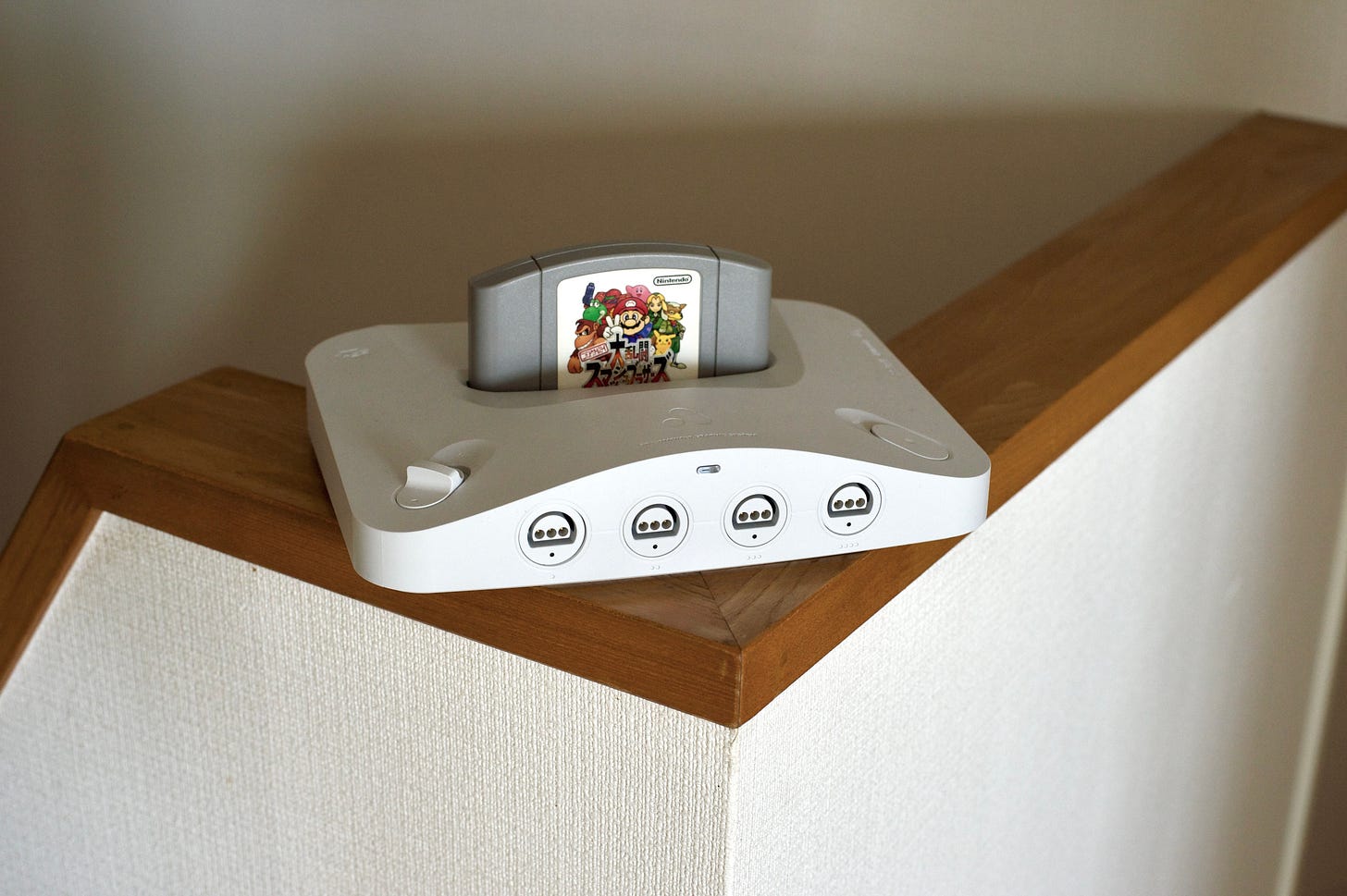Analogue 3D review: ultra 64
The latest console from Analogue is a Nintendo 64 revival with gorgeous 4K output
Beloved and influential as the Nintendo 64 was, it is fair to say that it did not exactly age well.
While the pioneering 3D console was powerful for its time, its video output was characteristically blurry and only supported composite or S-Video, making it a bad fit for modern TVs. Many of its games ran at low frame rates when run at higher resolutions with an extra RAM accessory, or required one to run at all. And although the controller introduced the world to the analog stick, its three-pronged design and unusual button layout are awkward by today’s standards.
There are options for playing Nintendo 64 games today, of course, but none of them are perfect. The system has historically been tricky to emulate perfectly, and a lot of the games don’t play well with a standard controller layout. Nintendo does sell an N64 controller for its online subscription service, but the selection of games is limited and it still relies on software emulation. And while hardware solutions like HDMI mods or scalers like the RetroTink 4K exist, they’re expensive and fiddly.
More than two years after it was originally announced, Analogue — maker of the excellent Analogue Pocket handheld — has finally delivered its solution: the Analogue 3D.
Like the Pocket and Analogue’s other consoles, the Analogue 3D is based on FPGA silicon, meaning the hardware itself has been programmed to replicate the Nintendo 64 directly. There’s no translation in software; your cartridges work as if they were plugged into an original N64.
Also like the Pocket, the Analogue 3D is designed to make the most of high-resolution displays despite running low-resolution software. The console outputs in 4K and recreates reference-class CRT and PVM TVs — in other words, the goal is to approximate the absolute best-case scenario viewing experience from when these games were released.
Finally, 8BitDo has released a new controller to go alongside the Analogue 3D. The 8BitDo 64 adapts the Nintendo 64’s unique button layout into a more familiar and modern form.
I’ve spent the past couple of weeks with the Analogue 3D. If you’ve held onto your N64 cartridges, I think you’re going to want to pick one of these up.
The Analogue 3D is a thing of beauty, evoking the Nintendo 64’s chunky, toy-like form in a minimalist, slimline block. It’s made of plastic but feels very high quality, with a matte texture and satisfying buttons. The front panel has four original N64 controller ports and a subtle LED indicator light; each port also has a small white light to indicate when a wireless controller is connected.
The console comes in white and black. My unit is the former, which I think looks great, but the black model is probably more authentic to the original Nintendo 64. Then again, that machine was released in a huge range of colours — as with the Pocket, I imagine Analogue may have some ideas for limited editions down the line.
The 8BitDo 64 controller also comes in black or white and feels almost identical to the company’s own Ultimate controller that I use with my PC. Other than the button layout and some technical differences, the pads are exactly the same. That’s a good thing; the Ultimate is my favourite generic controller, so it’s the ideal base from which to design a more practical option for the N64.
Once paired, the controller can wake the Analogue 3D while it’s switched off, although one thing to note is that right now the 8BitDo 64 is the only wireless controller that actually pairs with the console. That’s disappointing, not least because one isn’t included in the Analogue 3D box — it’s a separate purchase. I’d have preferred to use the original N64-style design for certain games, and Nintendo controllers have worked with previous Analogue systems in the past, but Nintendo Switch Online controller owners are out of luck for now.
Connectivity beyond controllers is straightforward. There’s a USB-C port for power from the included adapter, HDMI for video output, two USB-A ports and an SD card slot that will be used for things like firmware updates; a 16GB card is included. You can also store game artwork on the card to populate the console’s library function.
Analogue has developed a new operating system for the 3D called 3DOS. The UI is very straightforward. Once you plug in a game cartridge, it gets added to your library and can be scrolled through in an alphabetical row, though you still need to insert the cartridge each time to actually play a game. Occasionally the console wouldn’t be able to read my cartridge so it’d add an “unknown” entry to the library, which could be deleted once I blew on the game and reinserted. (This is perhaps why the system also comes with a couple of cartridge cleaning kits.)
The library entries include information on the game’s release as well as which accessories it supports — the Analogue 3D allows you to enable or disable virtual Controller Pak memory cards, the Rumble Pak and the 4MB RAM Expansion Pak, which was required for some N64 games like Perfect Dark and Donkey Kong 64.
Analogue claims 100% compatibility with every game from every region, which of course I wasn’t able to test in full, but I did use a range of US and Japanese cartridges. Japanese game titles are displayed in English characters — for example Super Smash Bros. was rendered as “Nintendo All-Star! Dairantou Smash Brothers” rather than using kanji or transliterations from katakana.
From the library, you can configure each game’s display settings individually before launching them, and they can also be tweaked in-game by pressing the menu button. Like the Pocket, you can switch between high-level display modes at any time with the menu button and D-pad.
These display modes are the biggest selling point for the Analogue 3D. My previous N64 solution was the EON Super 64, a $150 plug-and-play adapter that essentially converts S-Video output into HDMI and cleans the image up a little. It works fine, but ultimately it’s just a way of getting a solid 480p picture on a modern TV, which isn’t necessarily what game developers had in mind when designing their art.
More recently I’ve been playing the N64 games available on Nintendo Switch Online, which has a limited but fairly extensive collection and can be played with Nintendo’s own faithful wireless recreation of the original controller. Nintendo updated the app for the Switch 2 and it now includes a reasonably good CRT filter, which does make for a more authentic look in most games than relying on raw upscaled output.
But the problem with CRT or scanline filters is that not all CRTs were created equal. I’ve never really felt comfortable using the on/off toggles included in retro re-releases or Nintendo’s own emulators, because they always feel like a generic layer on top of the image rather than part of the natural output. Some people get really into designing their own CRT filters in search of better results, which is a cool hobby that I fully support without having anywhere near enough patience to investigate myself.
What Analogue is doing here is similar to how it recreated the look of the Game Boy’s screen on the Pocket. That system had an incredibly high resolution display, far beyond what was necessary to render any Game Boy game. But when you have so many pixels to spare, each in-game pixel can be made up of several more, reflecting the qualities of specific panels that may have been used at the time.
How this works in practice on the Analogue 3D is that you have BWM, PWM, CRT, Scanlines and Clean output modes, each of which are built using tweakable parameters. You can adjust things like integer scaling, how the image fits to your TV, whether it overshoots virtual edges and so on. This might not be enough control for the hardest of hardcore virtual CRT enthusiasts, but I think most people will be happy with what Analogue has cooked up.
The results are gorgeous, if a little difficult to explain or capture. Here are some off-screen photos that show the Mario Kart 64 title screen in each display mode. In order, the modes are BWM, PWM, CRT, Scanlines and Clean. The last shot is a macro photo of the M in PVM mode, where you can see how each “pixel” is actually made up of dozens in order to replicate a high-end Sony Professional Video Monitor.
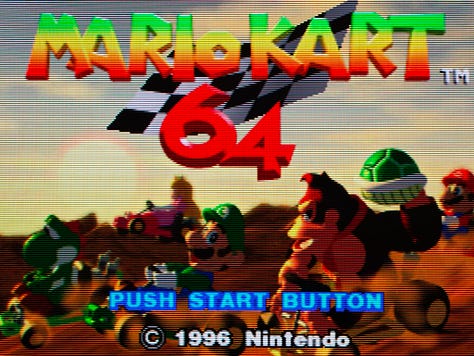
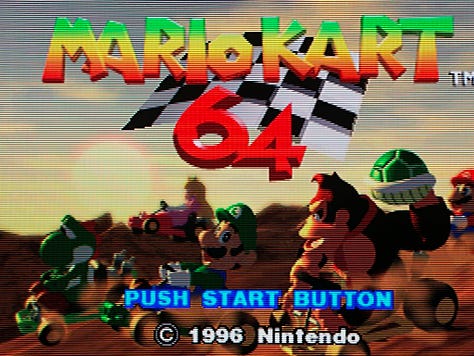
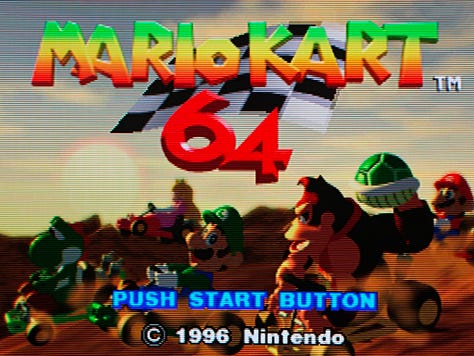
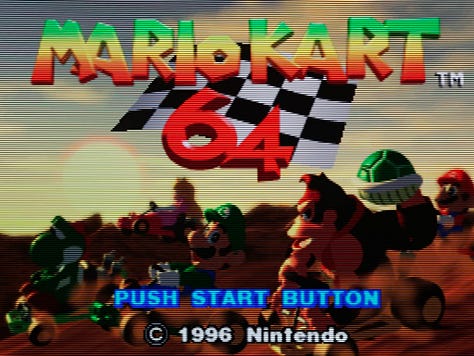
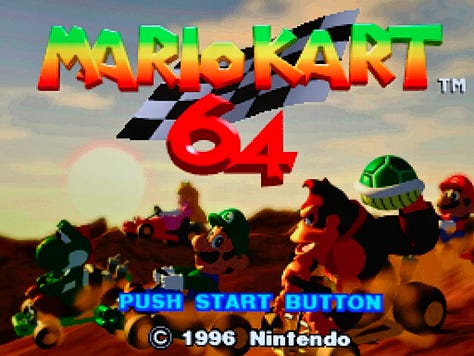
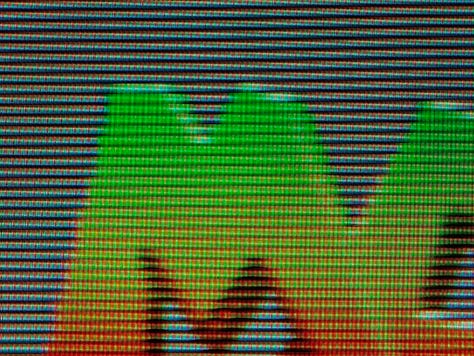
The PVM mode ended up being my favourite for most games — it’s crisp and preserves the raw pixel output to some extent, but the subpixel rendering smooths out the image’s rough edges and is generally more flattering to the art. The Clean mode is similar to what I get with the EON Super 64, which some people might prefer, but Nintendo 64 games never actually looked like that in the ‘90s. The PVM mode just looks like I was able to afford the world’s best TV back then.
Here are a few more examples:

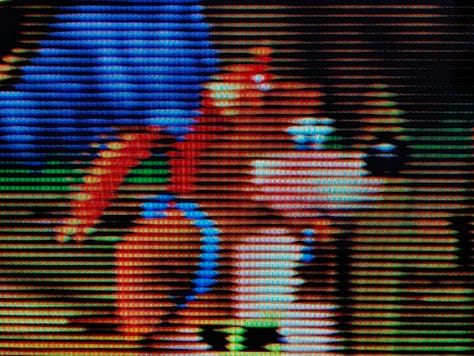
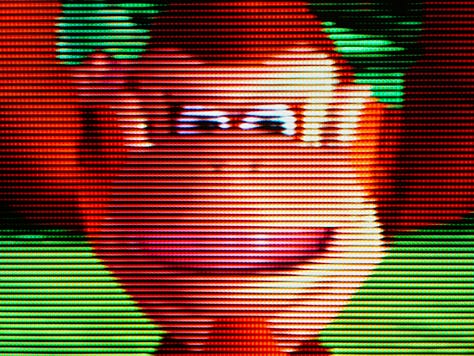
One thing to note here is that 4K output really does make a difference to the clarity and verisimilitude of the effect. Analogue is able to do a lot more at the pixel level than was possible with the 1080p Dock for the Pocket, for example.
Beyond the display modes, there are system-level options that also affect video output. You can enable or disable the original N64’s default blur filter, output in hybrid log gamma HDR and switch antialiasing on or off. There’s also a setting to unlock 32-bit colour, which was part of the original system’s rendering pipeline but never enabled in practice.
Many N64 games were not known for their stable frame rates, and the Analogue 3D does allow for improved performance through overclocking. While there is a mode that locks the FPGA to the original N64 hardware spec, you also have individual options to enhance RAM, video and CPU performance. This isn’t going to make Ocarina of Time suddenly run at 60 frames per second, but I did find it smoothed things out in some games. In particular, it seems to help with titles like Star Wars: Rogue Squadron, which had a high-resolution (400x440) Expansion Pak mode that could easily tank the frame rate on original hardware.
The 8BitDo 64 controller is mostly excellent in use. The face button layout is invaluable for a lot of N64 games that put button prompts on screen, and the eight-way gated Hall-effect analog stick massively improves on the original controller’s feel — and presumably durability.
But the layout doesn’t quite work perfectly for every release. Sin and Punishment, for example, was a rare game designed around using the N64 controller’s D-pad and analog stick at the same time, which isn’t really possible on the 8BitDo 64 without some weird thumb calisthenics. And games that are heavy on the Z-trigger don’t quite feel the same, since they’re in the usual L2 and R2 trigger positions.
Still, the 8BitDo 64 is a good compromise for the majority of titles, and at $40 it’s a compelling option for N64 emulation even if you’re not planning to buy the Analogue 3D. It also works with the Switch, Switch 2, Windows and Android.
Although the name “Analogue 3D” may suggest more expansive ambitions for the hardware, which is by some distance Analogue’s most powerful to date, right now this is purely a Nintendo 64 machine. It doesn’t support openFPGA, the development environment that allows the Pocket to morph into various other consoles or arcade systems with FPGA cores. It also only works with original cartridges, though jailbreaks that allow Analogue products to run games from the SD card slot tend to find their way onto the internet. Right now this is a niche, single-purpose appliance for people who still have N64 collections.
And almost every single one of those people should think about buying one. At $250, the Analogue 3D is surprisingly good value considering the cost of other solutions on the market, yet it delivers incredible results with minimal fuss. The design is beautiful, the software is simple and the output is gorgeous. The biggest downside is that initial preorders are sold out, with no word on when another batch will drop.
Overall, this is easily the best way to play most Nintendo 64 games in 2025. That’s what Analogue was going for, and it’s hard to say they didn’t succeed.



